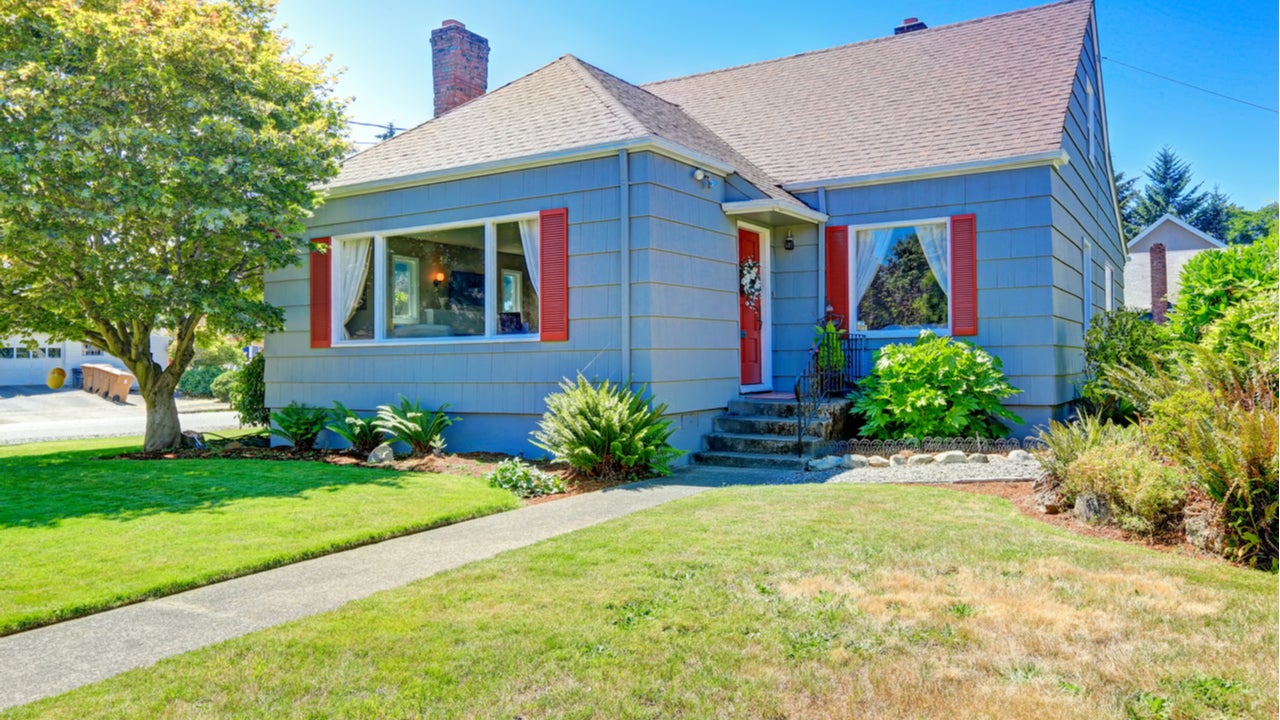What are mortgage points and how do they work?




Key takeaways
- When you buy mortgage points, you pay your lender an upfront fee in exchange for a lower interest rate.
- Typically, one point costs 1 percent of the amount you borrow and reduces your interest rate by 0.25 percentage points (for example, from 6.5 percent to 6.25 percent).
- If you expect to live in the home long enough to recoup the cost of the points, buying them may be worth it.
Mortgage points are a fee you pay your lender upfront to get a lower interest rate on your loan. A lower interest rate can reduce your monthly payment — and reduces the total amount of interest you’ll pay over the life of your mortgage. This practice is often referred to as “buying down the interest rate” or a “buydown.” Mortgage points are sometimes called discount points.
How do mortgage points work?
Each mortgage point typically lowers your loan’s interest rate by 0.25 percentage points for the life of the loan. In exchange for this lower rate, you’ll usually pay your lender 1 percent of the mortgage amount.
Say that you’re offered a $400,000 loan with a 6.5 percent interest rate, but you have the option to buy a mortgage point, also known as a discount point. In a common scenario, you’d have to pay 1 percent of the purchase price, or $4,000, for that discount point and it would reduce your interest rate from 6.5 percent to 6.25 percent.
Your lender may value points differently. If you’re thinking about buying points, ask your loan officer for specifics.
You can buy more than one point, and even fractions of a point. A half-point on a $400,000 mortgage would typically cost $2,000 and lower the mortgage rate by about 0.125 percent.
You’ll pay for the points at closing. They’re called “prepaid interest” on the loan estimate, which you’ll receive within three business days of applying for a mortgage, and the closing disclosure, which you’ll receive at least three business days before closing the loan.
When you receive your mortgage loan offer, first clarify whether the stated quote requires you to pay points. If you can’t get that rate without paying points, you might want to ask for another quote that doesn’t require them. You can then compare the differences in rates.
How much can you save by paying mortgage points?
If you can afford to buy discount points on top of your down payment and closing costs, you’ll lower your monthly mortgage payments and could save money overall. The key is staying in the home long enough to recoup the prepaid interest. If, after only a few years, you sell the home, refinance the mortgage or pay it off, buying discount points could mean you lose money.
Here’s an example of how discount points can reduce costs on a $400,000, 30-year, fixed-rate mortgage:
| Without points | With 1 point | With 2 points | |
|---|---|---|---|
| Interest rate | 7% | 6.75% | 6.5% |
| Cost of points | $0 | $4,000 | $8,000 |
| Monthly payment (principal and interest) | $2,661 | $2,594 | $2,528 |
| Total interest paid | $558,036 | $533,981 | $510,178 |
| Total interest savings | $0 | $24,055 | $47,858 |
In this example, by buying two points for $8,000 upfront, the borrower lowered their monthly payment by $133 and saved $47,858 in interest over the life of the loan. However, to save that full amount, the borrower would have to live in the home for the full, 30-year loan term and never refinance.
How to calculate your break-even point
To calculate the point at which you’d recover your outlay on the prepaid interest, divide the cost of the mortgage points by the amount the reduced rate saves you each month. Here’s an example:
Cost of points / monthly payment savings
$4,000 / $133 = 30 months
In this case, the borrower would have to stay in the home for about 30 months, or two-and-a-half years, to recover the cost of the points.
You can use Bankrate’s mortgage points calculator and amortization calculator to figure out whether buying mortgage points will save you money.
Pros and cons of mortgage points
Mortgage points offer benefits and drawbacks:

Pros
- Lower monthly payments and less interest paid overall
- Potentially tax-deductible

Cons
- Costs money upfront
- Won’t save you money if you sell or refinance before the break-even point
When you buy discount points on a mortgage, usually you’re locking in a lower rate permanently. But in some cases, a lender might offer a temporary buydown — a promotion that lowers your interest rate temporarily — which is usually paid for by the lender, or the builder if you’re buying a new home. One of the most common temporary buydowns is a 3-2-1: a rate that’s 3 percent lower for the first year of the loan, 2 percent lower for the second year of the loan and 1 percent lower for the third year of the loan. After that, the borrower pays the full interest rate for the remainder of the loan term.
Should you buy down your interest rate with points?
I’m ambivalent about paying points. It strikes me as a lot of extra analysis without a big reward.— Jeff Ostrowski, writer and housing market analyst for Bankrate
Right now, with interest rates higher than they have been in recent years, the idea of buying mortgage points might seem more appealing. However, because home values are also elevated, you might find that your break-even point is five or more years in the future. The longer it takes to recoup the cost of your points, the more carefully you should think about buying them — especially if rates are also trending downward (lower rates might prompt you to refinance).
For some, that exercise might not be worth their time or the relatively small amount of monthly savings.
“I’m ambivalent about paying points. It strikes me as a lot of extra analysis without a big reward,” says Jeff Ostrowski, writer and housing market analyst for Bankrate. “But, if it’s very important to you to lower the rate over the life of your loan, and you have cash on hand to make it work, go ahead. Just make sure you’ll keep the mortgage long enough to recoup the upfront costs.”
When is it a good idea to buy mortgage points?
Buying mortgage points is more likely to make sense in specific situations. For example:
- If you plan to be in the home for a long time: Because buying mortgage points reduces the rate for the life of the loan, every dollar you spend on points goes further the longer you pay that mortgage. If you plan to be in the house for years to come, the amount you’ll save is likely to make the upfront cost worth it.
- If you don’t plan to refinance any time soon: Generally, it’s not worth paying for points if you plan to refinance to a different rate before the break-even point.
If you’re not sure whether you should buy down your rate with points, do the math. It might make more financial sense to use the money you’d spend on points to make a bigger down payment, which would reduce the amount you need to borrow.
Discount points vs. origination points
Don’t confuse mortgage points that lower your interest rate with origination points. An origination point doesn’t affect your mortgage’s interest rate; rather, it’s a required fee the lender charges to create, process and underwrite the loan.
One origination point typically equals 1 percent of the total mortgage. Similar to discount points, you’ll pay origination points as part of your closing costs.
Not all lenders charge origination points. Some lenders allow borrowers to get a loan with no or reduced closing costs, but that often means you’ll pay a higher interest rate or other fees.
FAQ
Why we ask for feedback Your feedback helps us improve our content and services. It takes less than a minute to complete.
Your responses are anonymous and will only be used for improving our website.
You may also like


What is mortgage amortization?


